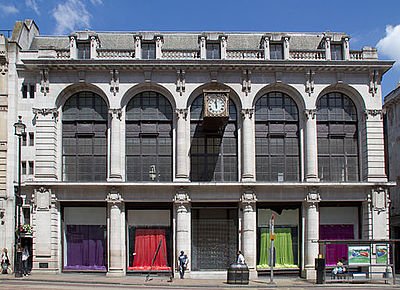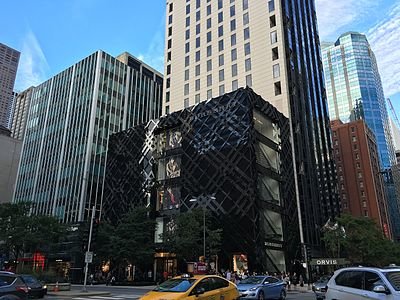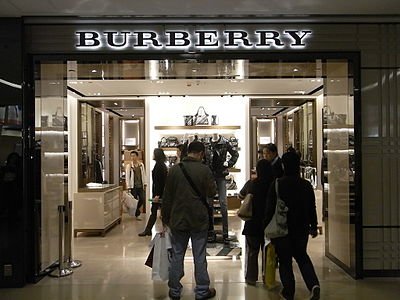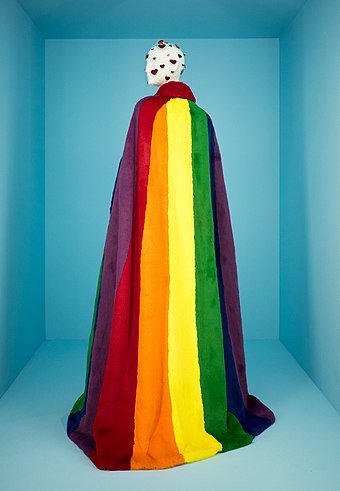British Heritage
Remember, Cherish, Learn.
beta
Burberry - Outdoor Attire, since 1856
A Testament to British Heritage and Fashion Evolution.
Burberry, an emblematic name in the realm of fashion, holds an irrefutable influence on the global stage of luxury and couture. The brand, based in London, England, designs and distributes a plethora of ready-to-wear apparel and accessories, including the iconic trench coats, leather goods, footwear, eyewear, fragrances, and cosmetics. A quintessential British name, Burberry's story and significant contributions are not merely confined to the realm of fashion but are woven intricately into the tapestry of British heritage and culture.
Burberry's inception dates back to 1856 when 21-year-old Thomas Burberry, formerly a draper's apprentice, inaugurated his own store in Basingstoke, Hampshire, England. The initial focus of the business was developing outdoor attire, which eventually took a pivot to the high fashion market. The creation of gabardine - a sturdy, water-resistant, yet breathable fabric, in which the yarn is waterproofed before weaving - was a revolutionary invention introduced by Burberry to the world in 1879. This marked the brand's first foray into innovative textile technology, an achievement that would set a precedence for its future endeavours.
The brand's first retail space opened in 1891 in the Haymarket, London. The Burberry Equestrian Knight logo, conceived in 1901 and later registered as a trademark in 1909, stands as a beacon of Burberry's brand identity, embodying the Latin word "Prorsum" which translates to "forwards". It was this spirit of constant innovation and forward-thinking that led Burberry to outfit Roald Amundsen, the first man to reach the South Pole, and Ernest Shackleton, who led a 1914 expedition to cross Antarctica.
Burberry's most iconic contributions to fashion and British heritage are arguably the creation of the trench coat and the Burberry check pattern. Initially designed to cater to the needs of military personnel during the First World War, the trench coat soon gained popularity among civilians post-war. The Burberry check pattern, introduced in the 1920s, was primarily used as a lining in the trench coats and remains one of the most recognizable patterns in the fashion industry.
A testament to Burberry's prominence in aviation and exploration was visible in the 1937 world record for the fastest return flight from London to Cape Town by A. E. Clouston and Betty Kirby-Green in a Burberry-sponsored airplane.
The brand's growth in the 1970s and 1980s was marked by international collaborations to diversify its product range. These included agreements with global manufacturers to produce products complementary to the British collection, such as suits, sportswear, and accessories. This era also witnessed celebrities adorning the Burberrys brand, amplifying its reach and influence.
A significant corporate restructuring took place under the leadership of Victor Barnett and Rose Marie Bravo, who were instrumental in restoring Burberry's status as a luxury fashion house in the late 1990s.
The 21st century ushered in a new era for Burberry, marked by leadership changes, challenges, and a continued commitment to innovation. The brand faced some reputational issues in the early 2000s, including an association with "chav" and football hooligan culture. However, under the leadership of Angela Ahrendts and Christopher Bailey, Burberry managed to turn around its image, removing the check-pattern from most of its products and reclaiming the brand's premium status.
In a digital leap forward, Burberry began online sales in the US, UK, and the rest of the EU, solidifying its presence in the e-commerce realm. Following Ahrendts' departure to Apple, Inc., Christopher Bailey took over as CEO and continued to shape the brand's narrative.
Burberry's recent past has been marked by leadership changes and initiatives to adapt to the changing fashion industry landscape. Under the creative helm of Riccardo Tisci, a new logo and monogram were introduced, reflecting Burberry's evolving identity.
Despite controversies surrounding the destruction of unsold goods, the brand responded positively, halting this practice and announcing an end to using real fur in its products. Burberry also demonstrated resilience amidst the COVID-19 pandemic and committed to a greener future with an aim to become a 'climate positive' company by 2040.
In the face of social and political issues, like the human rights abuses and genocide in Xinjiang, Burberry faced boycotts in China. However, these challenges also represent opportunities for the brand to reassess its operations and make necessary adjustments in line with societal norms and expectations.
Burberry, a bastion of British fashion, is a timeless testament to British heritage. Its innovative fabric technology, iconic products, and ability to adapt and evolve have etched it into the annals of fashion history. From the creation of the gabardine and the iconic trench coat, Burberry's tale is one of endurance, innovation, and a commitment to 'move forwards'. The brand's story continues to unfold, mirroring the changing face of Britain's cultural, fashion, and societal landscape.
1. The Inception and Early Years
Burberry's inception dates back to 1856 when 21-year-old Thomas Burberry, formerly a draper's apprentice, inaugurated his own store in Basingstoke, Hampshire, England. The initial focus of the business was developing outdoor attire, which eventually took a pivot to the high fashion market. The creation of gabardine - a sturdy, water-resistant, yet breathable fabric, in which the yarn is waterproofed before weaving - was a revolutionary invention introduced by Burberry to the world in 1879. This marked the brand's first foray into innovative textile technology, an achievement that would set a precedence for its future endeavours.
The brand's first retail space opened in 1891 in the Haymarket, London. The Burberry Equestrian Knight logo, conceived in 1901 and later registered as a trademark in 1909, stands as a beacon of Burberry's brand identity, embodying the Latin word "Prorsum" which translates to "forwards". It was this spirit of constant innovation and forward-thinking that led Burberry to outfit Roald Amundsen, the first man to reach the South Pole, and Ernest Shackleton, who led a 1914 expedition to cross Antarctica.
2. The Birth of the Trench Coat and the Burberry Check
Burberry's most iconic contributions to fashion and British heritage are arguably the creation of the trench coat and the Burberry check pattern. Initially designed to cater to the needs of military personnel during the First World War, the trench coat soon gained popularity among civilians post-war. The Burberry check pattern, introduced in the 1920s, was primarily used as a lining in the trench coats and remains one of the most recognizable patterns in the fashion industry.
A testament to Burberry's prominence in aviation and exploration was visible in the 1937 world record for the fastest return flight from London to Cape Town by A. E. Clouston and Betty Kirby-Green in a Burberry-sponsored airplane.
3. Expansion and Growth in the Late 20th Century
The brand's growth in the 1970s and 1980s was marked by international collaborations to diversify its product range. These included agreements with global manufacturers to produce products complementary to the British collection, such as suits, sportswear, and accessories. This era also witnessed celebrities adorning the Burberrys brand, amplifying its reach and influence.
A significant corporate restructuring took place under the leadership of Victor Barnett and Rose Marie Bravo, who were instrumental in restoring Burberry's status as a luxury fashion house in the late 1990s.
4. 21st Century: Rebranding, Challenges, and Innovations
The 21st century ushered in a new era for Burberry, marked by leadership changes, challenges, and a continued commitment to innovation. The brand faced some reputational issues in the early 2000s, including an association with "chav" and football hooligan culture. However, under the leadership of Angela Ahrendts and Christopher Bailey, Burberry managed to turn around its image, removing the check-pattern from most of its products and reclaiming the brand's premium status.
In a digital leap forward, Burberry began online sales in the US, UK, and the rest of the EU, solidifying its presence in the e-commerce realm. Following Ahrendts' departure to Apple, Inc., Christopher Bailey took over as CEO and continued to shape the brand's narrative.
5. Modern Burberry and Future Aspirations
Burberry's recent past has been marked by leadership changes and initiatives to adapt to the changing fashion industry landscape. Under the creative helm of Riccardo Tisci, a new logo and monogram were introduced, reflecting Burberry's evolving identity.
Despite controversies surrounding the destruction of unsold goods, the brand responded positively, halting this practice and announcing an end to using real fur in its products. Burberry also demonstrated resilience amidst the COVID-19 pandemic and committed to a greener future with an aim to become a 'climate positive' company by 2040.
In the face of social and political issues, like the human rights abuses and genocide in Xinjiang, Burberry faced boycotts in China. However, these challenges also represent opportunities for the brand to reassess its operations and make necessary adjustments in line with societal norms and expectations.
6. Conclusion
Burberry, a bastion of British fashion, is a timeless testament to British heritage. Its innovative fabric technology, iconic products, and ability to adapt and evolve have etched it into the annals of fashion history. From the creation of the gabardine and the iconic trench coat, Burberry's tale is one of endurance, innovation, and a commitment to 'move forwards'. The brand's story continues to unfold, mirroring the changing face of Britain's cultural, fashion, and societal landscape.
- Burberryen.wikipedia.org











